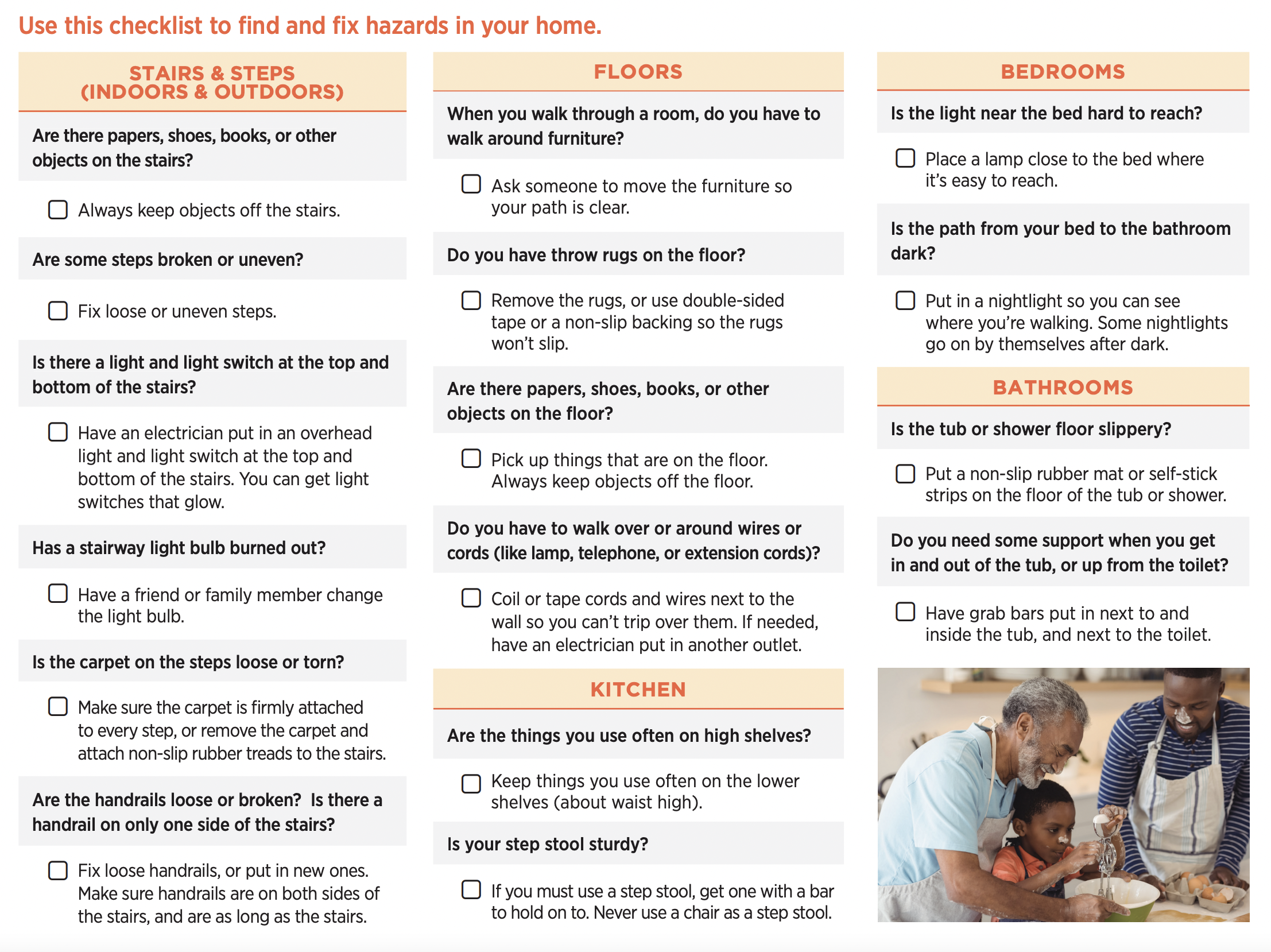What Does Dementia Fall Risk Do?
What Does Dementia Fall Risk Do?
Blog Article
Dementia Fall Risk Things To Know Before You Buy
Table of ContentsNot known Facts About Dementia Fall RiskThe Best Guide To Dementia Fall RiskSome Known Facts About Dementia Fall Risk.The Buzz on Dementia Fall Risk
A fall danger assessment checks to see exactly how most likely it is that you will certainly drop. It is primarily provided for older grownups. The analysis generally consists of: This includes a collection of concerns concerning your total wellness and if you have actually had previous falls or troubles with balance, standing, and/or walking. These tools examine your stamina, equilibrium, and gait (the method you stroll).STEADI includes testing, analyzing, and treatment. Treatments are suggestions that may minimize your danger of dropping. STEADI includes three steps: you for your threat of dropping for your risk variables that can be boosted to attempt to stop falls (as an example, equilibrium issues, impaired vision) to decrease your risk of dropping by utilizing effective methods (as an example, offering education and sources), you may be asked several concerns consisting of: Have you fallen in the past year? Do you feel unsteady when standing or strolling? Are you stressed over falling?, your company will certainly test your stamina, balance, and gait, utilizing the following autumn evaluation tools: This test checks your stride.
If it takes you 12 secs or more, it may indicate you are at higher danger for a fall. This test checks strength and balance.
Relocate one foot halfway ahead, so the instep is touching the big toe of your other foot. Relocate one foot totally in front of the other, so the toes are touching the heel of your other foot.
10 Easy Facts About Dementia Fall Risk Described
Most drops occur as a result of several adding aspects; as a result, handling the risk of dropping starts with identifying the factors that add to drop risk - Dementia Fall Risk. A few of one of the most relevant risk factors consist of: Background of previous fallsChronic clinical conditionsAcute illnessImpaired stride and balance, reduced extremity weaknessCognitive impairmentChanges in visionCertain high-risk medicines and polypharmacyEnvironmental elements can likewise enhance the danger for falls, consisting of: Insufficient lightingUneven or damaged flooringWet or slippery floorsMissing or harmed hand rails and get hold of barsDamaged or poorly equipped devices, such as beds, wheelchairs, or walkersImproper use of assistive devicesInadequate supervision of the people residing in the NF, including those that exhibit hostile behaviorsA successful fall danger administration program requires a thorough clinical analysis, with input from all participants of the interdisciplinary group

The care strategy need to also consist of interventions that are system-based, such as those that promote a risk-free environment (appropriate lights, hand rails, get hold of bars, etc). The efficiency of the click to investigate treatments need to be evaluated occasionally, and the care plan modified as necessary to reflect adjustments in the loss threat analysis. Executing a loss risk monitoring system making use of evidence-based best practice can lower the frequency of drops in the NF, while restricting the potential for fall-related injuries.
7 Simple Techniques For Dementia Fall Risk
The AGS/BGS standard click reference suggests screening all grownups matured 65 years and older for loss risk every year. This testing contains asking people whether they have dropped 2 or even more times in the previous year or looked for clinical focus for an autumn, or, if they have actually not fallen, whether they really feel unsteady when strolling.
Individuals that have actually dropped when without injury ought to have their equilibrium and stride examined; those with gait or balance problems need to get extra evaluation. A history of 1 fall without injury and without gait or balance problems does not call for additional analysis beyond ongoing yearly fall risk screening. Dementia Fall Risk. An autumn risk evaluation is needed as part of the Welcome to Medicare exam

Everything about Dementia Fall Risk
Recording a falls background is among the high quality indicators for fall prevention and monitoring. An essential component of danger assessment is a medicine evaluation. Several courses of medications raise fall threat (Table 2). copyright medicines in specific are independent predictors of falls. These medicines have a tendency to be sedating, modify the sensorium, and hinder balance and stride.
Postural hypotension can often be eased by minimizing the dose of blood pressurelowering drugs and/or stopping medications that have orthostatic hypotension as a negative effects. Use of above-the-knee assistance tube and sleeping with the head of the bed boosted may likewise minimize postural reductions in blood stress. The recommended aspects of a fall-focused checkup are displayed in Box 1.

A Yank time read review better than or equivalent to 12 seconds recommends high autumn danger. Being not able to stand up from a chair of knee height without making use of one's arms suggests boosted autumn threat.
Report this page